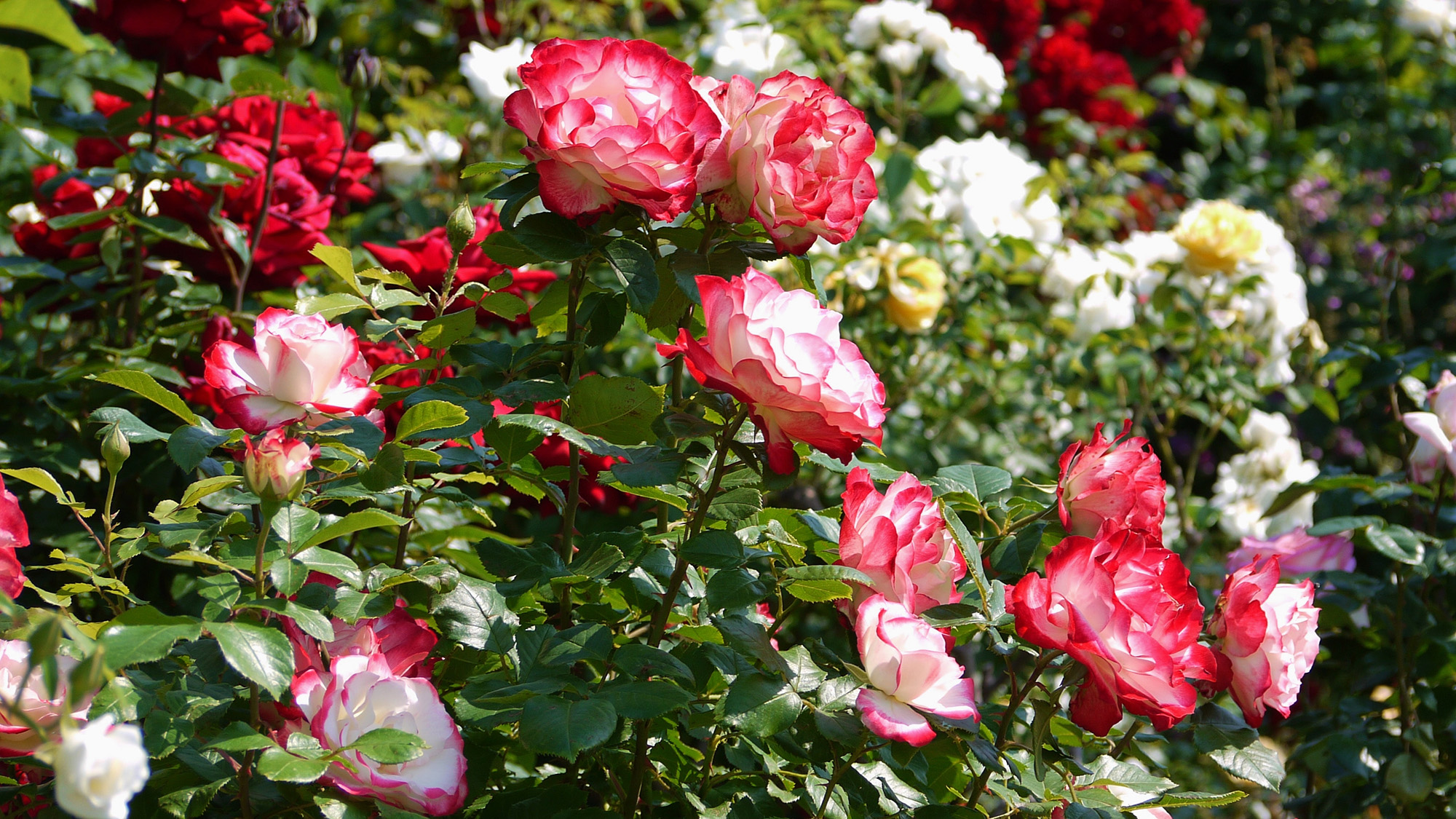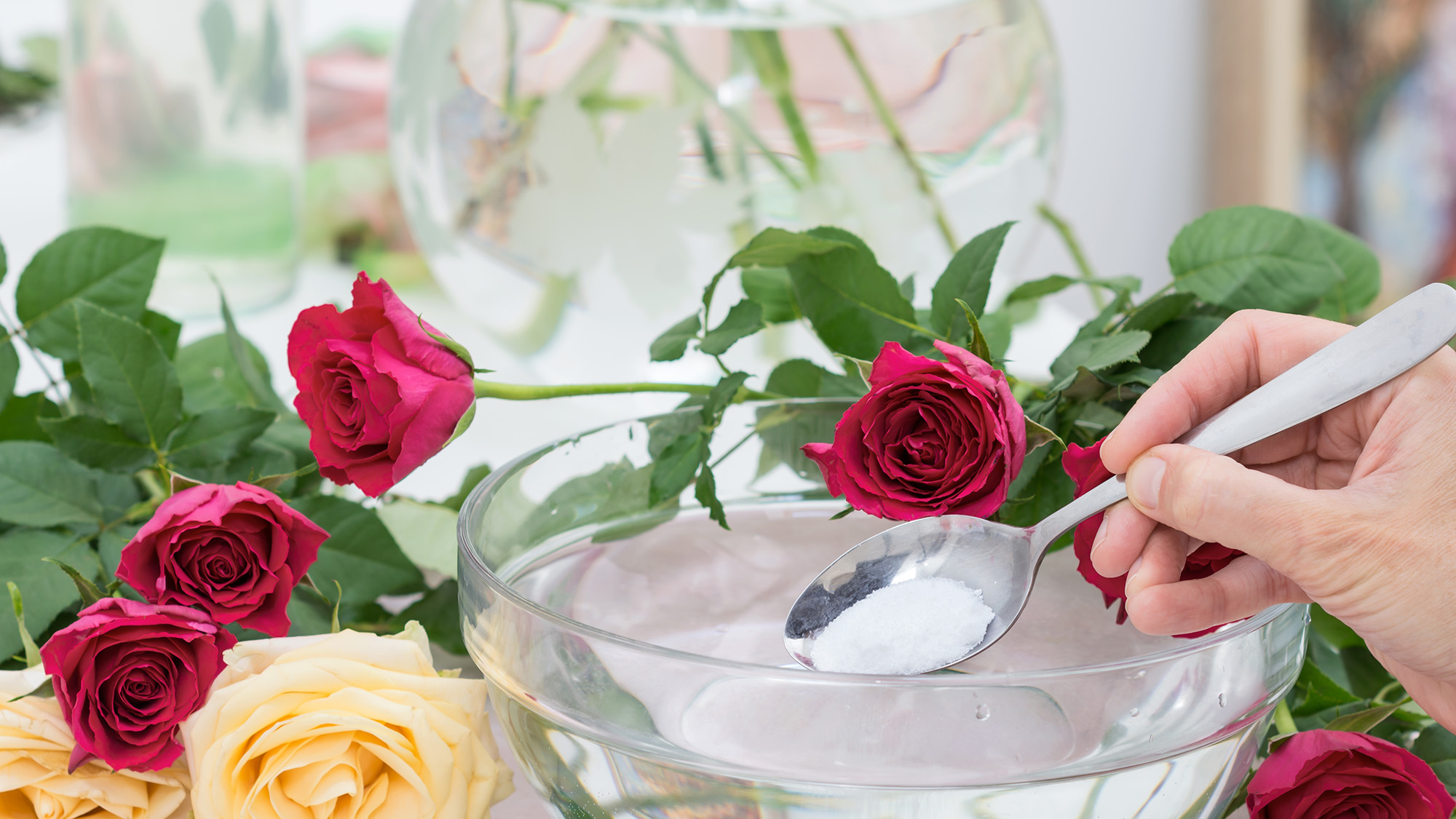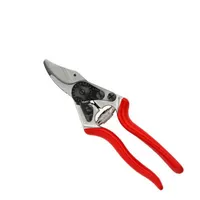How to care for roses in fall and winter — for beautiful blooms year after year

As the sunlight fades and the temperature drops, we all spend less time in our yards, but it doesn’t mean that our plants require any less care. In fact, keeping them healthy, especially knowing how to protect and cover your plants from frost, is vital during these conditions.
One much-loved perennial shrub needs special care and attention at this time of year if we want to enjoy its magnificent blooms in late spring and early summer. Late fall and winter are the prime times for roses, as at this point in the year, they are dormant, giving the roots the perfect opportunity to grow and establish.
But aside from roses that grow outside, if you’ve been lucky enough to be gifted a bouquet, they can also be nurtured to keep them healthy, so you can enjoy them for longer.
Here, with the expert advice of David Dyer, flower expert at Eflorist, we share six techniques to care for your roses inside and out during the fall and winter to ensure beautiful blooms.
How to care for outside roses

“The great thing about roses,” says Dyer, “is that they can be planted at any time of year, and fall and winter can be the most ideal time to start — increasing the chance of the roses blooming within the first year.”
However, he doesn’t recommend planting roses during the middle of winter, as the ground will most likely be frozen and will prevent the flower from gaining the valuable nutrients it needs.
But once you’ve planted your roses, Dyer says,” Keeping up with regular maintenance is key to enjoying your roses for as long as possible, and it’s important not to neglect them.”
Get instant access to breaking news, the hottest reviews, great deals and helpful tips.
1. Give them plenty to drink
“Caring for your flowers outdoors is equally – if not more — important than your flowers indoors,” says Dyer. And when taking care of your outdoor roses, it says it’s important to water them every three days or so.
However, the watering pattern changes in the colder months, when it tends to rain more often. “You can extend this cycle to water your roses only once per week — but on really rainy days, there may be no need to water them yourself at all,” he advises.
If you’re unsure if they need more water, Dyer suggests checking the soil’s moisture with your fingers to see if they need some.
2. Deadhead your roses

Deadheading your roses will encourage more blooms and will also keep the shape of the rose looking neat. “The best time to do this is from late spring to early fall when they start to fade slightly,” says Dyer, “So for those who have well-established roses, and haven’t deadheaded them, now’s the time!”
Before you deadhead your roses, you’ll need a pair of the best gardening gloves to protect your hands from thorns and a clean pair of pruning shears to ensure no disease is transmitted. Then, to deadhead your roses, Dyer says, “Remove any blooms that are wilted or brown first by cutting around ¼ of an inch above the new leaf or flower bud. You can also use your fingers to pinch these off.”
Removing the wilted flowers allows for new blooms to grow, which keeps the health of your rose bush in top-quality condition throughout the season.
Felco has a well-earned reputation for sturdy and reliable pruning shears, which is why we rate this F6 model as the best overall in our buying guide. They are designed for medium-sized hands, are lightweight and provide a comfortable ergonomic grip. The blade will also cut branches up to 0.8 inches.
3. Prune your roses

Dyer advises that winter is the best time of year to prune your roses, “providing them with the strongest growth for the rest of the year.”
But before you get started, as we mention above, always protect your hands and forearms with gardening gloves.
Pruning roses requires a different technique than for deadheading. “To prune your roses properly, make clean cuts that slope downwards around ¼ inch above the bud, and cut to an outward-facing bud to encourage an open-centered shape,” says Dyer. “For spreading roses, prune some stems to inward-facing buds to encourage upright growth.”
How to look after cut roses

1. Change the water in your vase
“For indoor roses, be sure to change the water in your vase at least once every 2-3 days,” says Dyer, “This keeps the water fresh, and clear of any bacteria lurking in the water that could harm the flowers.”
It’s just as important to remove any leaves lying below the waterline in your vase, as these can rot over time, and create bacteria that can kill the roses quickly.
If you arrange your roses in a clear glass vase, you’ll soon notice when the water needs changing, but it won’t be so obvious if you display them in a ceramic vase.
2. Try the sugar hack

Besides your normal routine to keep the water clean, there are a few different hacks you could try to prolong the lifespan of your roses in a vase. One of them is the sugar hack — a quick and simple method to keep your roses alive.
“Dyer explains, “Simply add two teaspoons of sugar into your vase of water, give it a little stir, as the sugar will give the flowers all the nutrients they need to maintain their health and growth.”
Remember to repeat the sugar hack every time you change the water to keep your roses well nourished.
Top tip
“This hack also works for all other flowers,” says Dyer, “so it is a great hack to use if your flowers need some extra nutrition.”
3. Try the bleach hack
If you’re running low on sugar, you could try the another staple household item. “Adding ¼ teaspoon of bleach to your vase of flowers is a great way to keep your roses fresh,” says Dyer. “The bleach helps to kill off any bacteria that could be lurking in the water — keeping your roses healthier for longer.”
However, always wear protective gloves when handling bleach and avoid adding more than the recommended amount.
More from Tom's Guide

Camilla is the Homes Staff Writer and covers everything to do with homes and gardens. She has a wealth of editorial experience, mounting over 30 years, and covers news and features, tests products for reviews and compiles buying guides.
Her work has appeared in business and consumer titles, including Ideal Home, Real Homes, House Beautiful, Homebuilding & Renovation, and Kitchen & Bathroom Business. She’s even appeared on the cover of Your Home, writing about her own house renovation.
Although she’s obsessed with decorating her home, she also enjoys baking and trying out the latest kitchen appliances. But when she’s not inside, you’ll find her pottering about in her yard, tending to her vegetable patch or taking in her prized hydrangeas.

